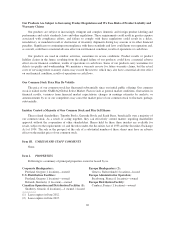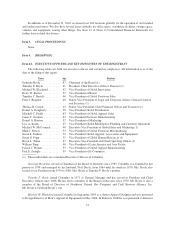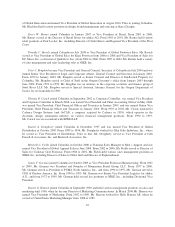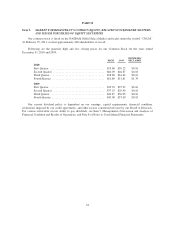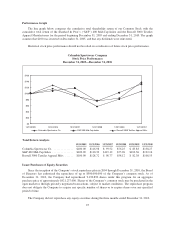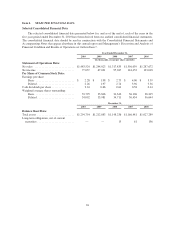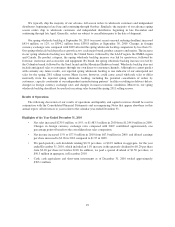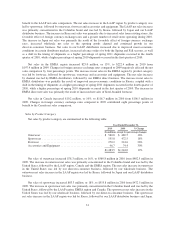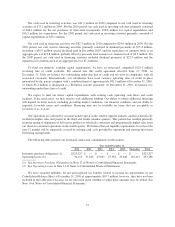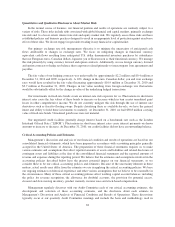Columbia Sportswear 2010 Annual Report Download - page 34
Download and view the complete annual report
Please find page 34 of the 2010 Columbia Sportswear annual report below. You can navigate through the pages in the report by either clicking on the pages listed below, or by using the keyword search tool below to find specific information within the annual report.Business Outlook
The business climate continues to present us with a great deal of uncertainty, with a number of variables that
we rely on for planning purposes moving in opposing directions making it more difficult to predict future results.
Factors that could significantly affect our 2011 outlook include:
• Unseasonable weather conditions affecting consumer demand and the resulting effect on order
cancellations and reorders;
• Changes in mix and volume of full price sales in contrast with closeout product sales;
• Manufacturing and/or transportation capacity constraints;
• The variability of input costs across our supply chain;
• Costs of expedited transportation;
• Incremental sales through our expanding direct-to-consumer operations, which are not included in
backlog;
• Changes in consumer spending activity and sales fluctuations in our own retail stores; and
• Fluctuating currency exchange rates.
Like other branded consumer product companies, our business is heavily dependent upon discretionary
consumer spending patterns. Continuing high levels of unemployment in our key markets and restricted credit
markets for consumers and retailers continue to pose significant challenges and risks. As a result, a more cautious
approach by our wholesale customers may persist, resulting in risk of reduction, delay or cancellation of advance
orders prior to shipment.
Over the past two years we have made significant investments in our go-to-market process to position us for
growth. Among other things we have:
• Sharpened our focus on product innovation;
• Built a multi-channel direct-to-consumer platform, including expanded retail store and e-commerce
operations;
• Refocused our marketing efforts behind new brand campaigns and media strategies for each of our
major brands; and
• Restructured our sales organizations to build relationships with new partners and strengthen those with
existing accounts.
As a result of these continuing efforts, we expect our operating expense levels to increase compared to 2010.
In addition, we have begun to make improvements to our operational processes, involving significant
investments in initiatives to improve our information technology infrastructure and our enterprise data and
information management across our organization, which is designed to improve operational flexibility and
performance across our supply chain. These investments are the foundation for a multi-year implementation of a
new global enterprise resource planning, or ERP, system which began in late 2010 and will accelerate in 2011
and beyond.
Wholesale Backlog
We generally solicit orders from wholesale customers and independent distributors for the fall and spring
seasons by March 31 and September 30, respectively, based on ordering deadlines that we establish to aid our
efforts to plan manufacturing volumes to meet demand for each of our selling seasons. Twice each year we report
our backlog of advance orders, representing the results of these seasonal order-taking processes.
28




